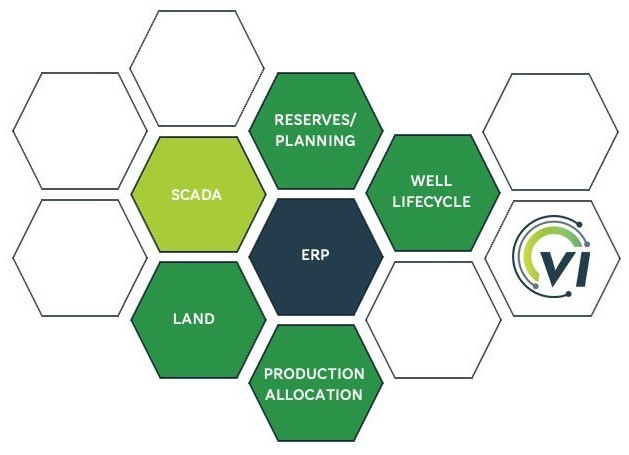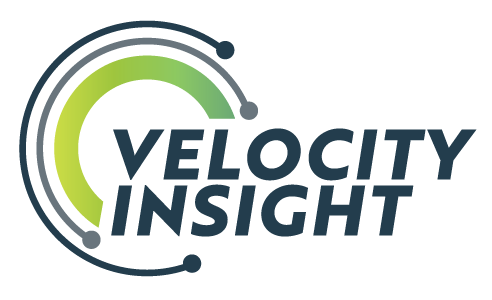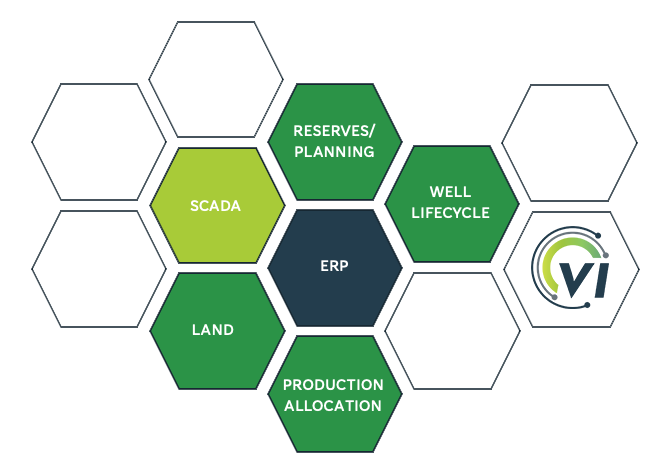Getting your arms around software at an E&P company can be overwhelming
Most E&P’s have dozens or even hundreds of enterprise software systems. But if you’re starting an effort on data quality, data integration, or software rationalization, where do you start? I’ll argue that at E&P companies, any digital strategy has to start by addressing The Big 6.
What gets a system such a lofty title as Big 6?
- Highly integrated with the rest of the Big 6
- Central to the basic functions of an E&P
- Expensive to rip & replace
At the vast majority of E&P’s, the following make up the Big Six:
-
- ERP (Enterprise Resource Planning)
- Land
- Production Allocation
- Reserves/Planning
- Well Lifecycle
- SCADA – the newbie (read on to find out why)
Each of these systems has (or should have!) integrations with multiple of the other systems. Each of these is critical to the daily operations of a typical North American E&P company. And each of them represent enormous sunk costs for software licensing, implementation, maintenance, and data integrations. If you get these right, you can compete with best-in-class operators in terms of worker productivity.

An ERP is not an ERP is not an ERP
As a reservoir/reserves guy, it pains me to say this – the Enterprise Resource Planning system is the true beating heart (all-seeing eye?) of an E&P. If you aren’t from Accounting, this might be an unfamiliar term – in short, an ERP is not just the accounting software, it stores all the data that feeds reports like 10-K’s, as well as containing/enabling key workflows.
At its best, a well-designed and implemented ERP contains just about everything an executive cares about – production, expenses, assets, liabilities, people, contracts. At its worst, an ERP is a frustrating behemoth that no single person could possibly understand.
There are at least 15 ERPs on the market for NAM E&Ps today (yes, we have a list), each with different lists of features and scope. Example brand names range from SAP to Bolo, Enertia, Integra, and OGSYS. At the minimum, an ERP can be little more than accounting and financial reporting. At the maximum, an ERP can include everything from HR and inventory to BI and vendor management. Large ERP implementations can even start to incorporate components of the rest of the Big 6 like Land document management, production allocation, and components of well lifecycle.
The industry is littered with sob stories of bad ERP implementations. Because modern ERP’s are capable or so many things, scope creep is endemic. No one system is truly proficient at the workflows underlying so many disciplines inside an E&P company. And because implementations require deep expertise, E&P companies almost always lean on outsourced implementation teams, whose incentives aren’t always aligned with the business. It’s a recipe for “overpromise, underdeliver.”
That risk is worth it, because done well, an ERP can make an E&P fly. Financial statements are timely, accurate, and easily audited. Workflows like AFE routing, material transfers, and accruals are fast and repeatable. Budgets are approved on time and variances easily tracked. Sounds nice, huh? You can only get there if you’ve done a great job on The Next Four.
The Next Four
The Next Four are fairly unique to E&P’s – Land, Production Allocation, Reserves/Planning, and Well Lifecycle have some parallels to other industries, but we have yet to see industry-agnostic tools be successful for these use cases at scale. Each deserves a blog in its own right, so we’ll stick to the surface level today (E&P people, you can skim this section!).
Mineral land systems
(and the data they store) are particularly unique to U.S. and Canadian oil and gas. There are at least a dozen Land Management systems on the market for E&P’s (once again, we have a list), but they all do two key things – store land data and enable common workflows. They track things like leases, tracts, well, completions, and spacing units, which tend to have complex many-to-many relationships. They typically integrate with the ERP, Production Allocation, Reserves/Planning, and Well Lifecycle systems.
Production Allocation systems
turn oilfield measurements like well tests, tank levels, and meter readings into oil, gas, and water volumes that are allocated back to individual wells on a daily or monthly cycle. They map the logical flow patterns between wells, vessels, and measurement points to determine which well should be credited with the produced oil, gas, and water volumes. Those volumes are used to determine revenue payments and feed regulatory reports. They typically integrate with ERP, Land, Reserves/Planning, Well Lifecycle, and SCADA systems.
Reserves/Planning systems
forecast future production and expenses using historical trends and aid in regulatory reporting for financial markets. Legacy reserves systems like ARIES and PHDWin are often supplemented with planning solutions like Enersight or Rigview, but there are also some modern tools that attempt to handle both sides, like ComboCurve. They typically integrate with ERP, Land, Production Allocation, and Well Lifecycle systems.
Well Lifecycle systems
take daily field reports of wellsite activity, equipment, and costs to build a full picture of a well’s life, from spud (birth) to abandonment (death). That history is used to feed everything from cost accruals to regulatory reports. WellView and OpenWells dominate the mid/large-cap market, but there are alternatives as well. They integrate with ERP, Land, Production Allocation, and Reserves/Planning systems.
As you can see, the Next Four have deep ties to the ERP and to each other. They feed and are fed data from other systems, have LOTS of duplicated (often unsynchronized) data like well headers and ownership information. These systems can run well into the six figures for annual licensing costs, and represent huge sunk cost investments in data loading, user training, testing, and reporting infrastructure. I don’t know of a single North American operator that lacks any of these four. Occasionally, we see an operator that has built something in Excel or another platform to handle these duties, but almost all operators use a commercial enterprise software for each of these.
SCADA, the Newbie
I’ll go ahead and get in front of this – I know SCADA isn’t new to O&G. In various forms, remote automated control systems date back 50 years and even farther. However, fully networked, integrated SCADA systems have really only been around for about 20 years, and onshore North American operators just started to really leverage the capabilities in the last decade.
As it currently stands, few E&P’s integrate SCADA with anything more than their Production Allocation system. Nightly loads of measurement data from SCADA to Production Allocation is typically a sky-high ROI project, eliminating manual field data capture and improving data quality. But since robust SCADA systems are often no more than 10 years old in onshore environments, few other disciplines are aware of the potential for integrating with SCADA.
That awareness should, and is, changing. High-frequency, near-live access to field operating conditions can unlock a host of use cases. From preventative maintenance to frac hit detection, inventory management to EHS alarming, a well-designed and fully-integrated SCADA system can drive costs down and reliability up. The Holy Grail of Pump By Exception is only realistic if SCADA is an integral part of the Big Six.
Bringing them together
Integrating The Big Six is notoriously difficult. They have fundamentally different data models, different vendors, and different user bases (calling back to our previous article on how O&G Data is Different). It’s rare to see more than two of these systems controlled by one Vice President at an E&P. But the technological and cultural hurdles are worth it – getting The Big Six to talk to each other saves money, improves visibility, and mitigates risk.
Drop us a line if this framework resonates.
We love this stuff, and genuinely enjoy thinking about where all this is headed. And stay tuned for some deeper dives on the Next Four!


